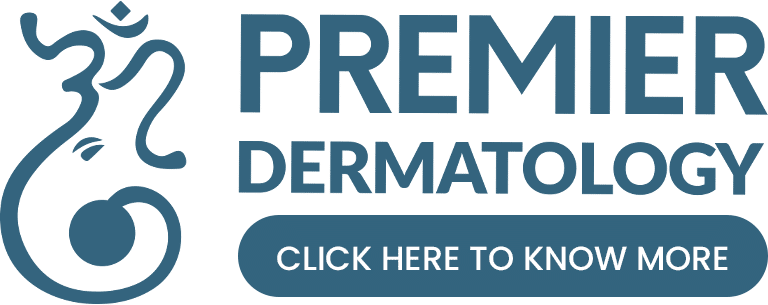Understanding Muscle Soreness
Muscle soreness is a common experience for individuals engaging in physical activity, particularly after a workout. It typically manifests as an uncomfortable sensation in the muscles and often accompanies an increase in physical exertion. Understanding the types of muscle soreness can aid in better management and recovery strategies. There are two primary forms of muscle soreness: acute soreness and delayed onset muscle soreness (DOMS).
Acute soreness occurs during or immediately after exercise. This sensation is generally short-lived, lasting for a few minutes to a couple of hours. It is primarily attributed to factors such as lactic acid accumulation and temporary muscle fatigue. During intense exercise, the body produces lactic acid as a byproduct of anaerobic metabolism, leading to the characteristic burning sensation experienced in the muscles. Once the activity ceases, lactic acid levels drop, and the acute soreness typically dissipates.
Conversely, delayed onset muscle soreness (DOMS) is experienced 24 to 48 hours after physical activity and can persist for several days. This phenomenon arises from micro-tears in muscle fibers, which occur during eccentric movements or unfamiliar exercises. As the body adapts to these stressors, inflammation and repair processes are triggered, which can result in stiffness and discomfort in the affected muscles. Although DOMS can be bothersome, it is generally considered a normal response to exercise, particularly when introducing new training regimens or intensifying existing ones.
Understanding these distinctions in muscle soreness can assist individuals in selecting effective pain relievers for sore muscles. Treatments may vary depending on the type of soreness experienced, from immediate relief to longer-term recovery methods. Recognizing the physiological processes underpinning muscle soreness equips individuals with the knowledge necessary to address and alleviate discomfort effectively.
Common Causes of Sore Muscles
Sore muscles, scientifically referred to as delayed onset muscle soreness (DOMS), often arise after engaging in physical activities that challenge the body’s muscular system. Several factors contribute to this condition, particularly in individuals participating in rigorous workout regimes. One primary cause is the intensity of workouts; higher workloads may lead to microscopic tears in muscle fibers, resulting in inflammation and pain as the body repairs itself.
Another significant factor is unfamiliar exercises. When individuals attempt exercises they are not accustomed to, their muscles can become shocked by the new demands placed upon them. This shock can lead to increased muscle strain and subsequent soreness. It is crucial for individuals to gradually introduce new activities to their routines to help their muscles adapt and minimize the risk of excessive soreness.
Additionally, the lack of proper warm-up and cool-down routines is a common oversight among fitness enthusiasts. Warm-ups prepare the muscles for the strain they will endure during a workout, increasing blood flow and flexibility. Conversely, cooldowns help to gradually lower the heart rate and reduce muscle stiffness post-exercise. Neglecting these essential practices may exacerbate muscle soreness, leading to prolonged recovery times.
Overexertion and sudden increases in activity level can significantly affect muscle recovery. Those returning to exercise after a period of inactivity or who are transitioning from low to high-intensity workouts should proceed with caution. It is vital to listen to one’s body and allow adequate recovery time to prevent injury and overtraining. By understanding these factors, one can take steps to mitigate soreness and enhance overall physical performance.
Importance of Recovery and Rest
After an intense workout, the body undergoes a rigorous process of recovery, which is crucial for preventing and alleviating soreness in the muscles. Understanding the significance of recovery and rest is essential for athletes and fitness enthusiasts alike. Adequate recovery allows the muscles to repair and grow stronger, minimizing the risk of injuries during subsequent training sessions.
One of the primary components of muscle recovery is the incorporation of rest days into a workout routine. These rest days give the muscles time to heal and rejuvenate, which can subsequently reduce the severity of muscle soreness. By allowing sufficient time for the body to recuperate, individuals can minimize the need for pain relievers for sore muscles, as the natural recovery process becomes more effective.
Additionally, proper sleep is a fundamental aspect of recovery. Sleep plays a critical role in muscle repair and overall health. During sleep, the body secretes growth hormone, which aids in tissue growth and regeneration. Insufficient or low-quality sleep can hinder this process, potentially leading to prolonged muscle soreness. Therefore, prioritizing quality sleep should be viewed as an essential strategy for managing soreness and enhancing recovery.
Nutritional choices further impact recovery. Consuming a balanced diet rich in protein, vitamins, and minerals assists the body in repairing damaged tissues and combating soreness. Foods containing anti-inflammatory properties can notably reduce discomfort and promote healing. Hydration also plays a vital role; adequate fluid intake is necessary for optimal muscle function and can help prevent cramping and tension.
In conclusion, recognizing the importance of adequate recovery and rest is vital for effective muscle management. Implementing structured rest days, ensuring quality sleep, and following a nutritious diet can significantly mitigate the need for reliance on pain relievers for sore muscles, fostering a healthier and more sustainable fitness journey.
Over-the-Counter Pain Relievers
Over-the-counter (OTC) pain relievers are often sought after for the effective management of sore muscles following a workout. Among the most common OTC options are ibuprofen, acetaminophen, and aspirin. Each of these pain relievers operates through different mechanisms and may be more suitable for certain types of muscle pain.
Ibuprofen, a nonsteroidal anti-inflammatory drug (NSAID), works by inhibiting the production of prostaglandins, which are chemicals responsible for inflammation and pain signaling. This action not only reduces pain but also alleviates swelling. The typical over-the-counter dosage for ibuprofen is 200 to 400 mg taken every four to six hours as needed, with a maximum daily limit of 1200 mg for self-medication. However, it is important to note that prolonged use can lead to gastrointestinal side effects and potential kidney issues, making it essential to consult a healthcare professional if pain persists.
Acetaminophen, another common pain reliever, operates primarily in the brain, decreasing the perception of pain and reducing fever. Acetaminophen is usually considered for mild to moderate muscle soreness and is often recommended at a dosage of 500 to 1000 mg every four to six hours, not exceeding 3000 mg per day. While generally well-tolerated, excessive consumption can lead to liver damage, which underscores the necessity of adhering to recommended dosages.
Aspirin functions similarly to ibuprofen as an NSAID, targeting inflammation while providing pain relief. Its typical dosage is 325 to 650 mg every four to six hours. However, due to the potential for gastrointestinal bleeding and allergies, its use for muscle pain should be approached with caution, especially in those with prior health complications.
Choosing the right pain reliever for sore muscles depends on individual circumstances, including health history and the severity of the pain. Therefore, it may be beneficial to consult healthcare professionals for tailored advice regarding the most appropriate OTC pain reliever for specific situations.
Natural Pain Relief Options
Experiencing muscle soreness after physical activity is commonplace, and many individuals seek natural pain relievers for sore muscles as alternatives to traditional medications. Among these, herbal supplements have gained popularity for their potential anti-inflammatory properties. Turmeric, which contains curcumin, is often lauded for its ability to reduce inflammation and combat discomfort associated with muscle strains. Another herb, ginger, is recognized for its pain-relieving attributes and can be consumed as a tea or supplement to support recovery from muscular soreness.
In addition to herbal supplements, essential oils are widely used in natural pain relief. Peppermint oil is famed for its cooling sensation and temporary numbing effect, which can alleviate muscle pain when massaged onto the affected area. Similarly, eucalyptus oil possesses anti-inflammatory properties and is also utilized in topical applications, often combined with carrier oils for enhanced effectiveness. The aromatic qualities of these essential oils can also provide a soothing effect, promoting relaxation after an intense workout session.
Topical treatments, such as arnica gel, have shown promise in managing localized pain when applied directly to sore muscles. Arnica is derived from a flowering plant and is thought to facilitate healing by improving blood circulation and reducing inflammation. When considering these natural pain relievers for sore muscles, it is crucial to assess their efficacy and safety compared to over-the-counter chemical solutions. Many individuals find that combining natural remedies with adequate rest and proper hydration enhances their recovery process, providing an effective and holistic approach to managing muscle discomfort.
Role of Physiotherapy and Massage
Physiotherapy and massage therapy play a significant role in alleviating muscle soreness following intense physical exertion, acting as effective pain relievers for sore muscles. These therapeutic modalities not only help reduce discomfort but also promote faster recovery through targeted techniques. One of the most beneficial techniques used in physiotherapy is myofascial release. This involves applying gentle, sustained pressure to the connective tissue surrounding muscles to relieve tension and improve blood flow. By alleviating the tightness within the fascia, myofascial release can significantly reduce the pain associated with sore muscles, enabling a quicker return to physical activities.
Another crucial technique employed in massage therapy is deep tissue massage. This form of massage focuses on realigning deeper layers of muscles and connective tissue. Suitable for tackling chronic pain and muscular tension, deep tissue massage works on areas that conventional massage techniques might not adequately address. The pressure applied during deep tissue massage encourages the release of muscle knots and alleviates pain, acting as a prominent pain reliever for sore muscles. Through enhanced circulation, this method also promotes healing by delivering necessary nutrients to the affected areas.
Moreover, stretching is a fundamental component of both physiotherapy and massage therapy. Regular stretching enhances flexibility and range of motion, which is vital for maintaining overall muscular health. Incorporating various stretching techniques into a post-workout routine can significantly diminish the intensity of muscle soreness and reduce the likelihood of injury. Together, these approaches contribute to an effective recovery strategy, helping athletes and fitness enthusiasts enjoy their training sessions with minimal discomfort. Understanding the vital role of physiotherapy and massage in reducing muscle soreness means better recovery practices for optimal performance in future workouts.
Hydration and Nutrition for Recovery
Proper hydration and nutrition play a crucial role in muscle recovery and the alleviation of soreness after a workout. When engaging in physical activity, the body’s demand for nutrients and fluids increases significantly. Dehydration can exacerbate muscle soreness, so it is important to replenish fluids lost through sweat. Water is essential, but incorporating electrolytes—sodium, potassium, calcium, and magnesium—can further assist in hydration and muscle function.
In terms of nutrition, protein emerges as a vital nutrient for muscle recovery. It provides the amino acids necessary for muscle repair and growth. Consuming a protein-rich meal or snack after exercising can stimulate muscle recovery and reduce soreness. This can be achieved through whole foods like chicken, fish, tofu, and legumes, or through protein supplements such as shakes and bars. Aim for a balanced meal that combines protein with complex carbohydrates to restore energy levels. Foods such as whole grains, fruits, and vegetables contribute to replenishing glycogen stores, which is essential for recovery.
Moreover, the inclusion of anti-inflammatory foods in one’s diet can aid in reducing muscle soreness. Foods rich in omega-3 fatty acids, like fatty fish, walnuts, and flaxseeds, have been shown to combat inflammation. Similarly, colorful fruits and vegetables are packed with antioxidants, which help mitigate oxidative stress associated with intense workouts. Incorporating foods such as berries, spinach, and sweet potatoes not only enhances recovery but also promotes overall health.
Ultimately, a thoughtful approach to hydration and nutrition can serve as an effective pain reliever for sore muscles, allowing individuals to maintain workout intensity and frequency. By prioritizing these aspects, athletes and fitness enthusiasts can experience improved recovery and reduced post-workout soreness.
When to Seek Professional Help
Muscle soreness after an intense workout is a common experience for many individuals. However, there are circumstances when muscle discomfort may signify more serious underlying issues, necessitating the involvement of a healthcare professional. It is essential to recognize specific warning signs or red flags that go beyond the typical soreness and could indicate a potential injury.
One of the foremost indicators that you should seek medical attention is the presence of severe pain that inhibits your range of motion. Unlike typical soreness that fades with rest and time, excruciating pain may suggest a muscle strain or tear that requires professional assessment. Additionally, if your sore muscles are accompanied by pronounced swelling, it could be a symptom of an injury that demands immediate intervention. Swelling may indicate that the body is responding to internal damage, and addressing it early on can prevent further complications.
Another critical sign to be aware of is if you experience muscle soreness alongside bruising or discoloration. These symptoms often indicate a more severe injury, such as a rupture, and warrant prompt medical evaluation. Furthermore, persistent soreness that does not improve after several days or worsens over time could indicate an underlying issue requiring intervention. In such cases, a healthcare provider can determine the most suitable pain reliever for sore muscles or provide alternative therapies to aid recovery.
It is important not to overlook symptoms such as numbness or weakness in the affected area. These signs may signify nerve involvement or damage, and consulting a medical professional is imperative. Seeking timely guidance can help ensure that soreness does not progress to a more significant medical concern. Understanding these warning signs allows for responsible management of muscle discomfort and promotes optimal recovery strategies through professional support.
Conclusion and Recommendations
In summary, the discomfort associated with sore muscles after a workout is a common experience for many individuals engaged in physical activity. To effectively address this discomfort, various pain relievers for sore muscles can be utilized. Throughout this blog post, we have explored both pharmacological and non-pharmacological methods to manage muscle soreness and enhance recovery.
Over-the-counter medications, such as nonsteroidal anti-inflammatory drugs (NSAIDs), have proven beneficial for many individuals seeking immediate pain relief. These medications help reduce inflammation and alleviate pain, making them a viable option for managing post-exercise discomfort. Additionally, topical analgesics can also serve as effective pain relievers for sore muscles, providing targeted relief directly at the site of pain.
Furthermore, non-pharmacological approaches, such as stretching, foam rolling, and cold or heat therapies, play a crucial role in muscle recovery. Incorporating regular stretching into a post-workout routine not only promotes flexibility but can also prevent the stiffness associated with sore muscles. Utilizing a foam roller can assist in releasing muscle knots and improve blood circulation, aiding the recovery process. Cold therapy can reduce inflammation immediately after workouts, while heat therapy can soothe tense muscles later on.
To enhance the recovery process further, hydration and nutrition must not be overlooked. Consuming adequate fluids and proteins post-exercise can replenish lost nutrients and support muscle repair. Finally, allowing sufficient rest between workouts is critical, as muscles require time to heal and strengthen. By employing these strategies, individuals can effectively manage muscle soreness and optimize their post-exercise recovery, leading to a more enjoyable fitness experience.


